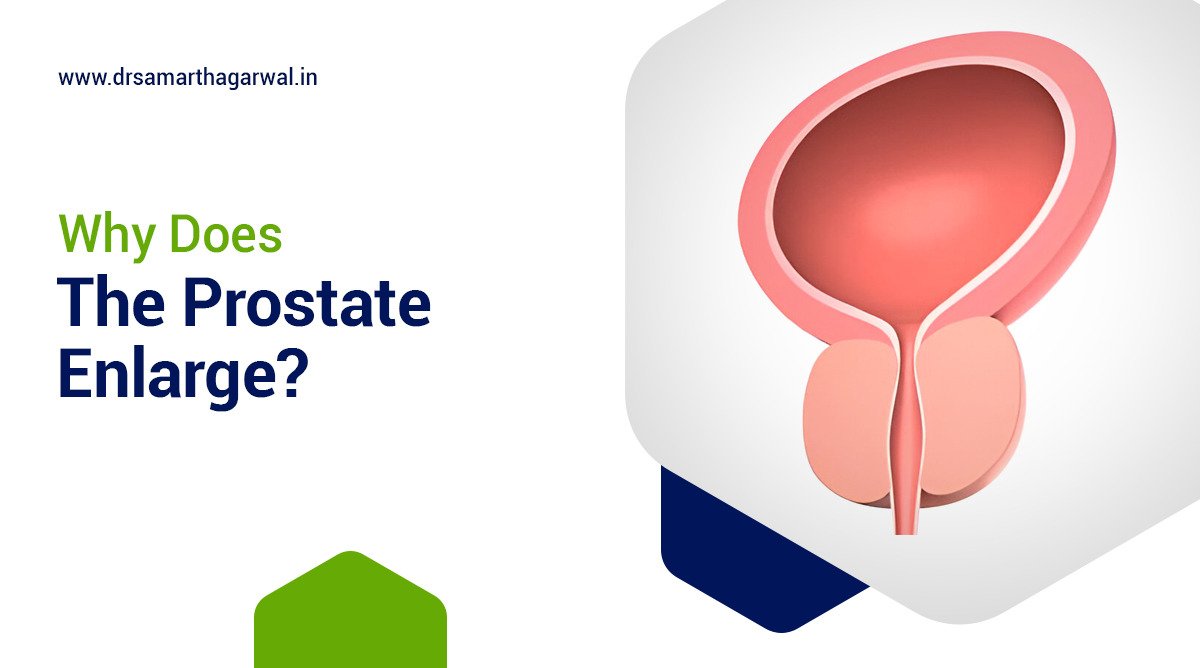The prostate gland is vital for men’s health, yet many individuals may not fully understand its location, function, or the factors that can lead to its enlargement. This article delves into the various causes of prostate enlargement, including hormonal changes, age, and genetics. It also highlights how to recognize common symptoms and emphasizes the importance of early diagnosis. Effective treatment options and practical lifestyle changes can help prevent issues related to the prostate. Join us to discover the essential information necessary for taking charge of your prostate health.
According to Kishanrao, S. (2022). Prostate health in India (BPH & Prostate Cancer). Archives of Cancer Science and Therapy, prostate health issues significantly affect the male population, with Benign Prostatic Hyperplasia (BPH) showing a clear age-related progression – affecting 25% of men aged 40-49, increasing to 37% for those in their 50s and 60s, and reaching 50% for men in their 70s. The prostate cancer scenario in major Indian cities reveals concerning statistics, with Delhi leading at 10.2 cases per 100,000 population, followed by Bengaluru (8.7), Mumbai (7.3), Chennai (7.0), and Bhopal (6.1). The study observes that while these numbers are significantly lower than Western countries, where rates reach 110-180 per 100,000, prostate cancer has emerged as the second leading cancer site among males in major Indian cities like Delhi, Kolkata, Pune, and Thiruvananthapuram, with a 5-year life expectancy rate of approximately 64%.
Causes of Prostate Enlargement
Benign prostate enlargement (BPE) is a common condition that primarily affects older men, particularly those over the age of 50. The main causes of prostate enlargement include hormonal changes involving dihydrotestosterone (DHT), age-related factors, and genetic predispositions.
Understanding these causes is crucial for the diagnosis and treatment of BPE, as well as for distinguishing it from more serious conditions such as prostate cancer. Studies indicate that men with a family history of BPE and prostate cancer face a higher risk of developing this condition, highlighting the importance of awareness for early intervention.
Hormonal Changes
This hormonal imbalance is thought to contribute not only to BPE but also possibly to prostate cancer, underscoring the importance of understanding hormones in relation to prostate health. The conversion of testosterone into DHT, facilitated by the enzyme 5-alpha-reductase, is a crucial part of this process.
As men enter middle age and beyond, testosterone levels typically decline; however, this can paradoxically result in higher levels of DHT due to unchanged production levels. Elevated DHT can stimulate the growth of prostate tissue, potentially leading to complications such as increased urinary frequency, a heightened urge to urinate, and difficulties in starting or stopping urination, along with other lower urinary tract symptoms.
Research has indicated that elevated DHT levels may be associated with an increased risk of prostate-related conditions, emphasizing the need for men to be aware of their hormonal health and to consult healthcare professionals for regular evaluations.
Age and Genetics
The most significant risk factors for benign prostate enlargement (BPE) in men are age and genetics. Research indicates that prostate size tends to increase with age, particularly in men over the age of 50. Additionally, a family history of prostate enlargement is linked to a higher risk of developing BPE.
Genetic factors can amplify individual risk factors associated with prostate enlargement, highlighting the importance for men—especially older individuals or those with a family history of prostate disease—to be vigilant about their prostate health and to seek regular medical checkups.
Almost half of all men aged 51 to 60 report symptoms of BPE, which can result in urinary issues and a decreased quality of life; this figure rises to nearly 90% in men over the age of 80. Studies have also identified specific genetic markers that are associated with an increased likelihood of developing this condition.
As awareness grows, routine screenings and proactive discussions with healthcare providers become essential for men, particularly those with genetic predispositions, to address potential issues early and implement necessary lifestyle changes.
Common Symptoms of Enlarged Prostate
The most common symptoms of benign prostate enlargement (BPE) significantly impact a man’s quality of life. Men with BPE often experience various urinary symptoms, including increased urinary frequency, urinary hesitancy, a weak urine stream, and the inability to completely empty the bladder, also known as incomplete bladder emptying.
Additionally, urinary urgency—the sudden urge to urinate—may develop as the prostate enlarges and exerts pressure on the urethra.
Urinary Issues
Urinary symptoms are among the most common issues faced by men with benign prostate enlargement (BPE). These symptoms can include:
- urinary frequency, characterized by the frequent urge to urinate;
- urinary hesitancy, which refers to the difficulty in starting urination;
- a weak urine stream, where the flow of urine is reduced, causing men to spend more time in the restroom;
- and incomplete bladder emptying, which may leave men feeling the need to urinate again shortly after finishing.
To assist men in recognizing the types of urinary symptoms associated with BPE, enabling them to seek medical advice and discuss potential treatments, the following sections explore the different urinary symptoms, their impact on daily life, and their relationship to men’s health issues, particularly in older men.
These problems can significantly disrupt daily life, interfering with work, social activities, and sleep patterns. For instance, having to get up multiple times during the night to use the bathroom can lead to sleep disturbances and increased fatigue, ultimately diminishing a man’s overall quality of life.
Additionally, urinary hesitancy and a weak flow may heighten anxiety in public settings, leading men to feel embarrassed or pressured. The consequences of these symptoms can extend beyond mere discomfort; long-term urinary issues can result in psychological distress and adversely affect a man’s intimate relationships.
Pain and Discomfort
Pain and discomfort can be significant complications of an enlarged prostate, particularly in cases of chronic urinary retention. Men may experience discomfort in the lower abdomen or pelvis, and pain during urination could indicate a urinary tract infection (UTI) or other related issues.
Acute urinary retention, which is characterized by a sudden inability to urinate, can be extremely painful and may require emergency medical treatment. These symptoms often worsen during prolonged periods of sitting or while sleeping, leading to disruptive urges that interrupt sleep or daily activities.
As the prostate enlarges, it can obstruct the urinary passage, resulting in further complications such as frequent urination at night (nocturia) or a weak urine stream.
These symptoms not only diminish the quality of life but also pose a risk of severe infections if left untreated. Consulting with medical professionals can help clarify the relationships between an enlarged prostate, urinary tract infections, and the management of urinary retention.
Diagnosing an Enlarged Prostate
The diagnosis of an enlarged prostate, also known as benign prostatic enlargement (BPE), involves a comprehensive range of medical tests and examinations to assess prostate health.
A thorough evaluation typically includes a digital rectal exam (DRE) to assess the size and shape of the prostate. Additional tests, such as urinalysis and measurement of prostate-specific antigen (PSA) levels, are important for detecting abnormalities or infections.
Early diagnosis is crucial for effective symptom management and for preventing potential complications.
Medical Tests and Exams
Medical tests and exams are essential for diagnosing benign prostate enlargement (BPE) and assessing overall prostate health. A prostate exam, which typically includes a digital rectal exam (DRE), allows healthcare providers to evaluate the size and consistency of the prostate.
Urinalysis is conducted to check for any infections or abnormalities in the urine, while the prostate-specific antigen (PSA) test helps identify potential concerns related to prostate cancer. The combination of these diagnostic tools offers a comprehensive view of a man’s prostate health and facilitates better management of any arising issues.
Along with these primary tests, healthcare professionals may use imaging techniques to obtain images of the prostate. A transrectal ultrasound can provide detailed images of the prostate and surrounding organs, offering further insights into its structure.
Furthermore, a uroflowmetry test measures urinary flow rates, which is crucial for assessing the severity of urinary symptoms associated with BPE.
Evaluating each of these elements is vital for differentiating BPE from other prostate diseases. By utilizing a combination of these various examinations, providers can gather data that presents a more complete picture of the patient’s prostate health. This information not only aids in managing existing problems but also assists in developing preventive strategies.
Treatment Options for Enlarged Prostate
Treatments for benign prostate enlargement (BPE) vary depending on individual health needs, symptoms, and the overall condition of the prostate.
The most common treatment options include medications for benign prostatic hyperplasia (BPH), which help reduce the size of the prostate or alleviate urinary symptoms.
For more severe cases, surgical options such as transurethral resection or Holmium laser enucleation may be considered.
Additionally, lifestyle changes play an important role in alleviating symptoms and promoting prostate health. Therefore, it is crucial for men to discuss all available treatment options with their doctors.
Medications and Procedures
Medications and procedures play a crucial role in managing benign prostate enlargement (BPE) by providing symptom relief and promoting prostate health. Alpha-blockers are commonly used to relax the muscles around the bladder neck, which helps alleviate urinary symptoms. On the other hand, 5-alpha reductase inhibitors work by lowering the levels of dihydrotestosterone (DHT) in the body, leading to a reduction in prostate size.
In situations where medication alone is insufficient, surgical procedures such as transurethral resection or Holmium laser enucleation may be necessary to remove excess prostate tissue and relieve obstructive symptoms. These treatment options aim not only to reduce discomfort but also to enhance the overall quality of life for those affected by BPE.
Alpha-blockers, such as tamsulosin, generally provide quick relief within a few days, although they may cause side effects like dizziness or retrograde ejaculation. In contrast, 5-alpha reductase inhibitors, like finasteride, may take several months before significant changes are observed, making patience essential.
Similarly, surgical techniques can offer effective long-term relief but may also lead to complications such as bleeding or infection. Therefore, the severity of symptoms and the patient’s overall health must be carefully considered when determining the most appropriate management approach.
Preventing Enlarged Prostate
Benign prostate enlargement (BPE) can be prevented by adopting proactive lifestyle changes and strategies that promote prostate health.
Key factors that can help reduce the risk of prostate enlargement include:
- Regular exercise
- A healthy diet rich in fruits and vegetables
- Proper weight management
Additionally, smoking and excessive alcohol consumption can negatively affect prostate health. By implementing these preventive measures, men can lower their risk of developing BPE and the urinary symptoms often associated with aging.
Lifestyle Changes and Prevention Strategies
Making lifestyle changes and implementing prevention strategies are essential for maintaining prostate health and reducing the risk of benign prostate enlargement (BPE). Simple ways to achieve this include engaging in regular physical activity, following a diet rich in antioxidants, and practicing effective stress management.
Routine medical check-ups and discussions with healthcare providers about prostate health can facilitate the early diagnosis and treatment of any potential issues.
Men can further enhance their prostate health by making specific dietary choices, such as incorporating tomatoes and cruciferous vegetables, which contain beneficial compounds. Regular aerobic exercise not only boosts overall fitness but also contributes to hormonal balance, which is important for prostate health.
Staying well-hydrated and limiting processed foods can help establish a solid foundation for overall wellness.
Open communication with healthcare professionals and adherence to medical advice regarding screening processes, such as PSA tests, can provide additional proactive measures for protecting prostate health. These lifestyle changes not only benefit the prostate but also improve overall health.

Contact Dr. Samarth Agarwal if you have any questions or concerns about prostate enlargement issues!




